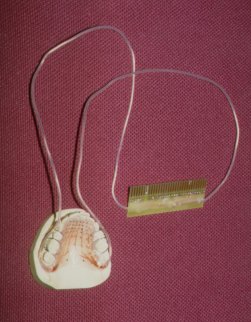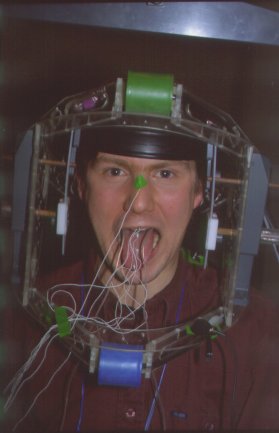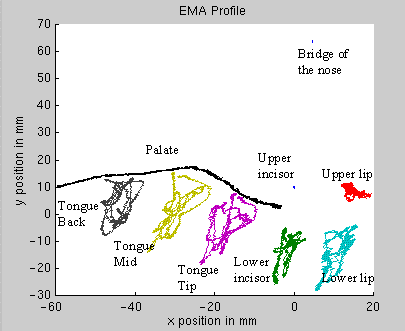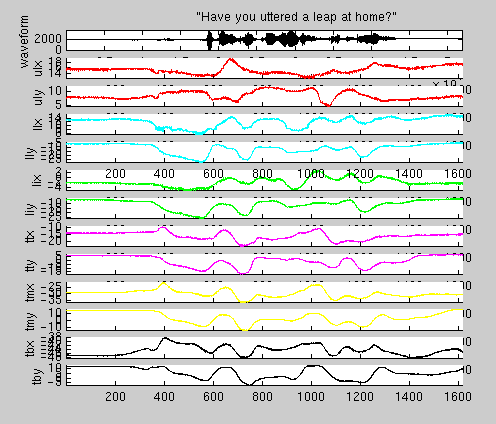|
|
|
| Electropalatography (EPG) uses a thin artificial palate to measure tongue-palate contact during an utterance. Contact of the tongue with any of the 62 electrodes embedded in the palate completes an electrical circuit, and tongue-palate contact is registered. The system used was developed at Reading. |
In Electromagnetic Articulography (EMA) electromagnetic transducers, mounted in a helmet worn by the subject, induce a current in small coils placed on the articulators. The strength of the current is used to calculate the position of the articulators. The picture shows a subject wearing the Carstens AG100 Articulograph helmet and the artificial palate displayed. Coils are mounted on the subject's tongue and the bridge of his nose. |



